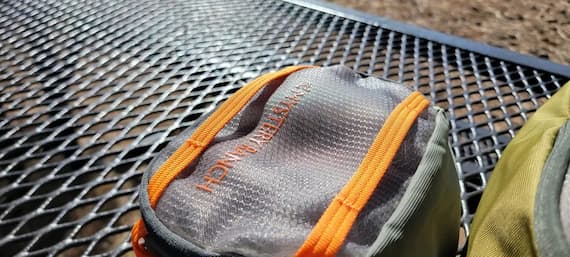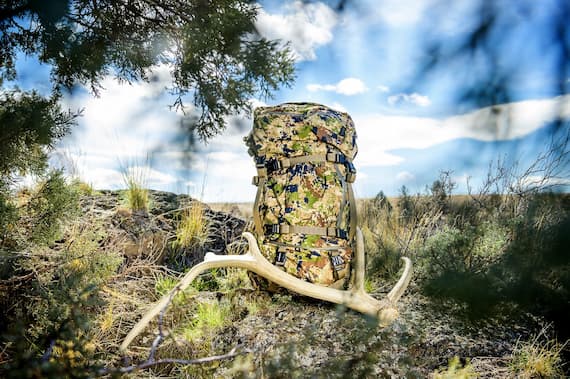Have you ever set out on an adventure only to realize that you didn’t have the right gear to carry your essentials? Whether you’re hiking rugged trails, camping under the stars, or exploring new terrain, a reliable backpack keeps everything organized, secure and within reach. If well-designed, it distributes weight evenly, protects your gear from the elements and ensures you can move freely and confidently. If you’re looking for the perfect design for your next adventure, the following guide is for you.
Understanding Your Adventure: Types of Outdoor Backpacks

Enhance your overall experience on the trail with a high-quality backpack for outdoor adventures. However, every journey demands a specific kind of pack—one designed to match the terrain, duration and activities you have in mind. Understanding the various types of outdoor backpacks helps you pack smarter, travel lighter and move with ease.
Daypacks are the go-to choice for short hikes, city explorations, or casual outings. Compact and lightweight, they’re ideal for carrying essentials like water, snacks, a light jacket and a first-aid kit. With capacities ranging from 10 to 30 litres, daypacks prioritize comfort and accessibility, often featuring hydration compatibility and external mesh pockets.
For longer treks or overnight camping, hiking and trekking backpacks step in. These are designed for endurance, offering capacities between 40 and 70 litres. Their sturdy frames, adjustable straps and supportive hip belts help distribute weight evenly, reducing strain during long walks. Many models include weather-resistant materials, sleeping bag compartments and attachment points for trekking poles or gear.
If you’re heading off grid for several days, expedition packs are your best ally. Built for maximum capacity, sometimes exceeding 80 litres, these backpacks can carry everything from food and shelter to extra layers and technical equipment. They’re crafted for stability and durability, with advanced suspension systems and reinforced fabrics to handle extreme environments.
For more specialized adventures, an outdoor backpack for climbing, trail running packs and hydration packs cater to specific needs. Climbing packs offer a streamlined design for manoeuvrability, while trail running packs provide snug fits and built-in hydration systems. Hydration packs, in particular, are perfect for hot climates or high-intensity activities where water access is key.
When on the hunt for the ideal option available, keep in mind that each type serves a distinct purpose, so understanding your adventure is crucial before you pack. Also, consider how long you’ll be out, what gear you’ll need and the conditions you’ll face.
Weighing Different Material Options
When picking a backpack for outdoor adventures, the material plays a major role in its durability, weight and overall performance. The right fabric determines how well your pack withstands the elements, resists wear and protects your gear. Each material comes with its own strengths, making it essential to weigh your options before deciding.
Nylon is one of the most common backpack materials, loved for its balance of strength and flexibility. Variants like ripstop nylon include reinforced threads that prevent small tears from spreading, making them ideal for rugged hikes and unpredictable weather. Polyester, on the other hand, is slightly heavier but offers excellent UV resistance, which is perfect for sunny or desert environments.
For ultra-light adventurers, Dyneema (or cuben fibre) is a premium choice. It’s extremely lightweight yet incredibly strong and waterproof, though it often comes at a higher price. Canvas packs, though heavier, remain popular for their vintage look and natural toughness, which makes them best suited for casual trips or short excursions.
Getting the Right Capacity
This is one of the most important decisions for any outdoor adventure. The size of your pack determines how much gear you can bring and how comfortable your journey will be. If it’s too small, you’ll struggle to fit the essentials. On the other hand, if it’s too large, you’ll be tempted to overpack, adding unnecessary weight and reducing mobility.
Finding the perfect balance is key to enjoying your trip without compromise. For short day hikes or single-day adventures, a backpack with a 15 to 30-litre capacity is usually ideal. This size comfortably fits water, snacks, an extra layer and a few personal items without weighing you down. For overnight or weekend trips, consider something in the 30 to 50-litre range.
These packs have enough room for clothing, a sleeping bag and cooking gear while remaining manageable on the trail. When embarking on multi-day expeditions or extended treks, opt for a pack between 50 and 80 litres, especially if you’re carrying camping gear or travelling through colder climates where bulkier clothing is necessary.
Frame Types: Structure Determines Support
The frame of your backpack plays a crucial role in how comfortably and efficiently you carry your load. It provides structure, balance and stability, especially on longer or more demanding trips. There are three main types of backpack frames: internal, external and frameless, each suited to different adventures. Internal frame backpacks are the most common today.
Built with hidden support rods or frame sheets, they hug the body closely, offering excellent balance on uneven terrain. External frame backpacks, with their visible metal structures, excel at carrying heavy or bulky loads and provide superior ventilation, making them great for organized gear storage. Meanwhile, frameless backpacks are lightweight and flexible, favoured by ultra-light hikers and minimalists who prioritize speed over structure.

